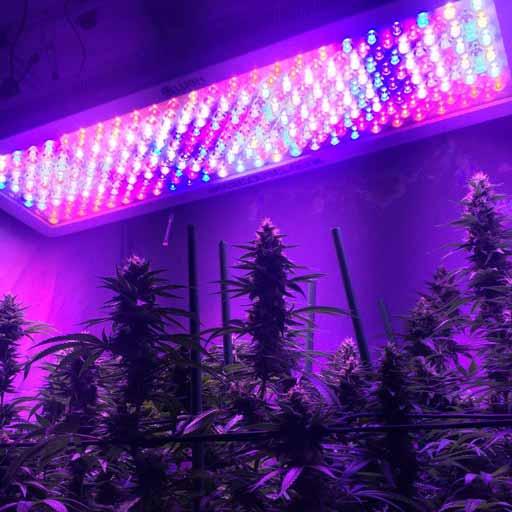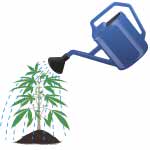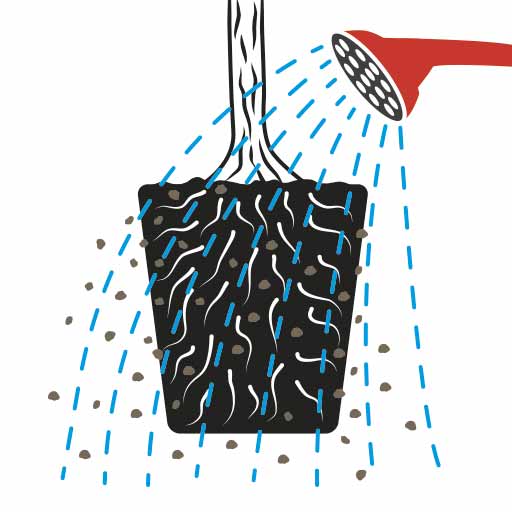The electrical consumption growing marijuana indoors is a frequently asked question by growers who are planning their first growing operation. The power of the equipment used, the energy consumption, as well as the efficiency of the electronic compounds makes a huge difference in the bill, so everything should be studied properly in each case before deciding to buy an certain equipment or another.
Electrical consumption of lighting equipment
The electrical consumption in Watts (P) of any tool is calculated multiplying the Amps (I) used, by Volts (V): P= V x I.
It is known by growers that electric products manufacturers (like ballasts, lamps, extractors, etc) claim a power, resulting of the quoted multiply, in a test controlled conditions. In these tests an ideal situation is created (with certain conditions) to certify the technical specifications of the tool.
If we want to calculate the real electrical consumption of an appliance at home, what would be right would be to analyze what electrical conditions we have at our place. When we talk about electrical conditions we refference that light supply companies send the light with an oscillation in the wires that may cause the Volts we recieve could vary: It is possible that in some places we recieve 220V, in other places 230V, and in other 240V, at the same time it is possible to recieve 200-210V. The Volts recieved will mark a difference in the real consumption (and in true power) of the appliance). In example:
We take as a reference a ballasts wich manufacturer tells that maximum amps when booting is 6,7A:
- If at the house 1 we recieve 230V, the real electrical consumption would be 6,7 x 230= 1541 (when booting).
- At the house 2 we recieve 240V, so the real electrical consumption would be 6,7 x 240 = 1608W (when booting).
- At the house 3 we recieve 200V, so the real electrical consumption would be 6,7 x 200 = 1340W (when booting).
We must note that by maximum amps when booting we understand that to boot the appliance will use that amount of amps, even though after some time working those amps will decrease.
Efficiency of electric appliance for indoor growing
The efficiency of an electric appliance makes reference to the better use of the energy that appliance makes. So on one side we know that a 600w lighting equipment produce a certain amount of light. On the other side we known that internal looses exist, so part of the energy consumed is used to make the appliance work and some not. Said this, we step forward to the efficiency of each equipment. We understand as more efficient those equipments that waste less power in internal looses, to offer the same power output. Those looses may be caused by the compounds used, temperature loses, etc.
It is also understood as lower efficiency if one equipment brings less lumens than another, for the same power consumption.
Talking about efficiency, we should not only check lighting equipment. Another interesting point (with high consumption) are air conditioners in summer, or heaters in winter, as well as extractors and fans. It is common than those equipments with good performance and lower price usually consume more power (less efficient). During the lasts years the norms about efficiency have increased, so manufacturers should adapt to these new laws and manufacture appliances with lower consumption. A good example about this issue are the new Can Fan Q-Max extractors, a new generation extractor with EC specifications, that consumes less watts than Can ISO-Max, giving better performance, and also being possible to dimme them from 0 to 100% without those annoying noises common in extractors manufactured with old technology.

Can Fan and Q-Max extractors
Ballast comparative and maximum Amps (booting)
-
 Eti 600w ballast / 6,7 Amps
Eti 600w ballast / 6,7 Amps -
 Master Gear 600w ballast / 3,7 Amps
Master Gear 600w ballast / 3,7 Amps -
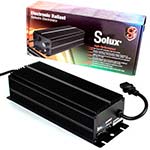 Solux 600w ballast / 3,7 Amps
Solux 600w ballast / 3,7 Amps
-
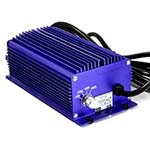 Lumatek 600w ballast / 2,75 Amps
Lumatek 600w ballast / 2,75 Amps -
 Lush Lighting Dominator 2x XL 650w / 2,7 Amps
Lush Lighting Dominator 2x XL 650w / 2,7 Amps
If we look to the data above, we clearly see how efficient an appliance is, just knowing the amps it consumes to produce the same output. This takes us to reality: A more efficient ballast, will reduce our electricity bill. It's not only this, with a more efficient ballast we will be squeezing less the wires, what will derive in more security for the grower, that will sleep safer. In some cases (where the consumption is close to the maximum accepted by our installation at the facility) this can even mean the difference of only using one lamp, or using two lamps (what would increase the yield for sure).
Another important fact that we can exemplify with this data is that with the same amps consumed (or even less), the Dominator 2x Xl LED has more output (650w) than its competitors, using much less watts to boot. In addition to watts consumed, there is another extra benefit in heat, due LED lamps generate substantially less heat than the old magnetic ballast, and also create more lumens (what derives in increased yields per crop).
How to calculate the electrical consumption of a facility
Light supplier companies calculate the light consumption in KW (kilowatts) used by users.
If we want to know exactly what would it be the real consumption of our grow-room, we should add to this formula all appliances used. The formula works this way:
Real consumption in Kw:
- 1: (Price of a Kw/h) x 18 (hours a day on) x Total Kw consumed (all electric elements together) x (number of days of vegetative stage).
- 2: (Price of a Kw/h) x 12 8hours a day on) x Total Kw consumed (all electric devices together) x (number of days of flowering stage).
The real consumption is 1+2.
Conclusion:
If we want our facility to be more electrically efficient, so we waste less budget in bills) we should use those more efficient devices. Probably in a short-term we are spending more, but in a mid-long term we will be saving lots of money.
Did you like this post? Give us a Like for cannabis legalization!
If you enjoyed this article maybe you like these too:


